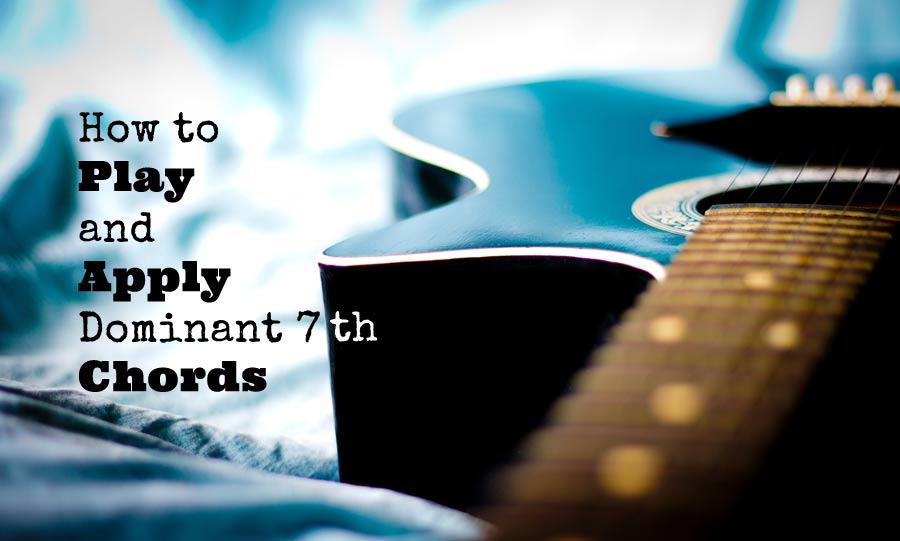September 4, 2023 by Klaus Crow

The dominant 7th chord is a chord that you will find in a lot of popular songs and many styles of music. In fact it’s the most essential chord type in blues music and one of the defining characteristics that defines the blues sound. But even if you’re not into blues, you want to make this chord part of your guitar vocabulary.
The dom7 chord comes in various shapes and sizes. We start with the “open” dom7 chords which are great for beginners and work our way up to more intermediate level dom7 chords: “The moveable chords”.
We’ll first take you through some basic dominant 7th music theory, we’ll show you the different types of dom7 chords and shapes, and then apply the chords to the song.
Let’s dive in!
Chord Analysis
The Dom7 chord is simply a major triad with a flatted seventh (b7).
The major triad consists of the root (1), the major third (3) and the perfect fifth (5).
So the Dom7 chord formula = 1 3 5 b7
Let’s take a Cdom7 (also called “C7”) chord as an example.
We look at the C major scale: C D E F G A B C and we take the root (1st), 3rd, 5th and b7th note of that scale and you get the notes: C-E-G-Bb. So a Cdom7 (C7) chord consists of the notes: C E G Bb
 If you are playing guitar for a certain time, surely you have tried to master alternate picking. This is a technique that a novice guitar player must learn in order to reach speed and the ability to play fast solos and melodic lines.
If you are playing guitar for a certain time, surely you have tried to master alternate picking. This is a technique that a novice guitar player must learn in order to reach speed and the ability to play fast solos and melodic lines. Most beginner and even some intermediate guitar players try to avoid scales. They don’t see the use of it. A scale doesn’t sound cool. It can be tough and boring to practice.
Most beginner and even some intermediate guitar players try to avoid scales. They don’t see the use of it. A scale doesn’t sound cool. It can be tough and boring to practice. You got a guitar, an amp, a decent clean sound, but your amp is missing that great distortion sound that will blow you away. You might already have a great distortion, but you’re lacking a 70’s classic rock tone or you want to add that sweet tone from your favorite guitar player to your arsenal.
You got a guitar, an amp, a decent clean sound, but your amp is missing that great distortion sound that will blow you away. You might already have a great distortion, but you’re lacking a 70’s classic rock tone or you want to add that sweet tone from your favorite guitar player to your arsenal.